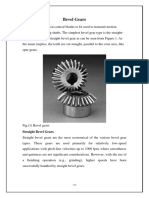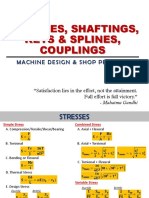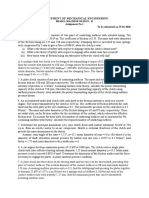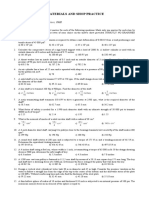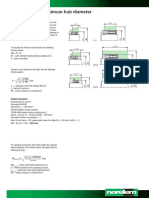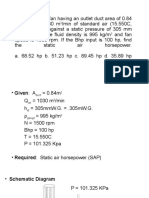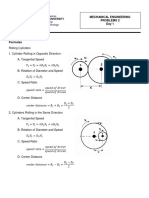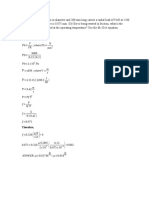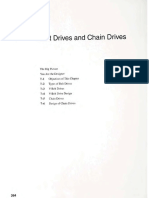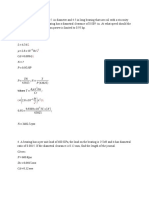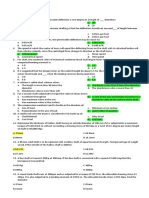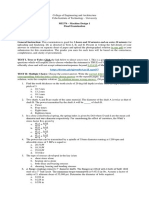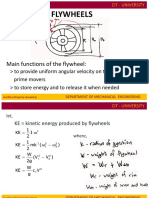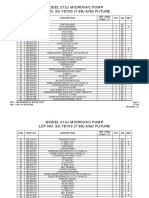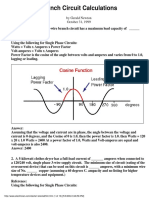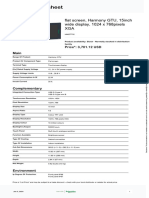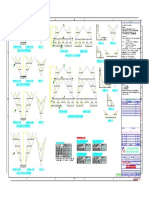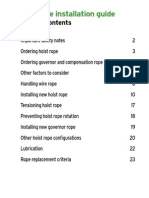0% found this document useful (0 votes)
377 views14 pagesTypes and Uses of Mechanical Couplings
Coupling is a mechanical device used to connect parts of a mechanical system. There are rigid and flexible couplings. Rigid couplings provide a permanent connection while flexible couplings allow for some movement between connected shafts. Common types of couplings include flange, compression, collar, elastic-material bonded, chain, Oldham, and hydraulic couplings. Examples demonstrate calculating power transmission and stresses in coupling components like bolts and keys.
Uploaded by
dsadasdasdasCopyright
© © All Rights Reserved
We take content rights seriously. If you suspect this is your content, claim it here.
Available Formats
Download as PPTX, PDF, TXT or read online on Scribd
0% found this document useful (0 votes)
377 views14 pagesTypes and Uses of Mechanical Couplings
Coupling is a mechanical device used to connect parts of a mechanical system. There are rigid and flexible couplings. Rigid couplings provide a permanent connection while flexible couplings allow for some movement between connected shafts. Common types of couplings include flange, compression, collar, elastic-material bonded, chain, Oldham, and hydraulic couplings. Examples demonstrate calculating power transmission and stresses in coupling components like bolts and keys.
Uploaded by
dsadasdasdasCopyright
© © All Rights Reserved
We take content rights seriously. If you suspect this is your content, claim it here.
Available Formats
Download as PPTX, PDF, TXT or read online on Scribd
/ 14




